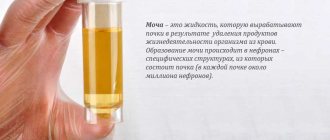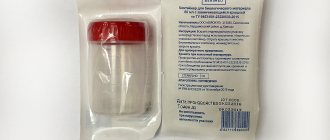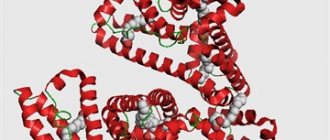The kidneys act as a purifier in the human body, continuously filtering the blood. During the filtration period, the body gets rid of accumulated impurities and toxins. The filters located in the kidneys are called glomeruli, thanks to which toxins enter the urine and are eliminated from the body. The Reberg-Tareev test or Reberg test allows you to determine the amount of creatinine in urine and blood serum. Analysis of the Rehberg test helps to quickly identify possible kidney pathologies in a patient.
Description of the method
Rehberg's test is a technique that allows you to determine an increased or decreased level of GFR (glomerular filtration rate).
GFR is the volume of ultrafiltrate or primary urine produced in the kidneys per unit of time.
Almost all substances absorbed by the body move from the lumen of the kidney tubules into the blood. However, reabsorption (reabsorption of fluid) does not always occur. This means that sometimes substances are excreted in urine in the original amount in which they passed through the nephrons.
Using Rehberg testing, the vital activity of the bladder and urinary ducts is determined.
The unit of measurement in the test is milligrams per minute, the indicator is the clearance of endogenous creatinine.
The test is based on the determination of creatinine in the patient’s biological material. Plasma is collected mid-event and urine is collected at 1, 4, 12 and 24 hours.
You can learn about what glomerular filtration is from the video from the Cloud Ua channel.
Characteristics of the analysis
First, it’s worth defining what the Rehberg test is. This is the clearance of endogenous creatine. The breakdown is also called coil filtration. This methodical indication indicates the condition of the kidney structures. Such diagnostic measures are prescribed for pregnant women. Pregnancy is a period when a woman’s kidneys have a double load; the organs cannot fully fulfill their functional load.
Because of this, women suffer from the occurrence of late gestomas and the progression of hypertension. There is a decrease in the woman’s level of normal well-being, and severe swelling appears.
Note! The test is prescribed when it is necessary to check the kidneys for their normal functional load, to determine the speed of vital activity and work of the glomeruli.
Indications for use
The Reberg-Tareev test is prescribed to study anomalies in the functioning of the excretory system.
Indications for:
- rapid decrease in urine volume;
- swelling;
- rapid heartbeat with a painful symptom;
- hypertension;
- convulsions;
- nausea and vomiting;
- sudden exhaustion and lethargy;
- loss of consciousness.
When a decrease or increase in indicators occurs again, the specialist prescribes a second test using additional diagnostic techniques.
Historical reference
In 1926, Paul Rehberg developed this technique. The famous Danish physiologist was the first to explore the possibilities in the field of glomerular filtration rate. To make what he wanted into reality, the scientist used clearance data.
Despite the fact that difficulties arose along the path of discovery, the scientist was still able to complete the job. Scientists have concluded that creatine remains in constant concentration in the blood throughout the day.
The next step in the development of the analysis was E. Tareev. His proposal was to evaluate the functioning of the glomerular element system in organs. Thus, over the subsequent time, the original theory proposed by Rehberg was improved.
The research process has become easier; there is no need to inject creatine into a vein.
How to properly collect urine?
The best option is to start the study in the morning.
Rules for collecting a biological sample:
- Drink the required amount of water in the morning.
- Pour out the first portion of the morning liquid.
- Then the specialist takes blood serum from the bend of the elbow.
- Next, the patient collects all urine excreted during the day into sterile containers.
- Each time it is necessary to record the exact time of urination and the volume of urine.
- The biological fluid must be kept in the refrigerator (biological material is characterized by rapid decomposition).
- The last sample is taken one day after the start of the examination.
- From the total volume of urine, 50 ml must be taken into a sterile container.
- Place a sticker on the container with the total amount of biofluid, indicate age, height and weight.
Preparatory process
In order for the urine for the Rehberg test to indicate the actual condition of a person, and for the result to be as reliable and accurate as possible, it is necessary to adhere to several basic recommendations.
Under the ban, heavy physical activity and strength training are completely excluded. Coffee drinks and teas are also prohibited. The amount of liquid consumed should be approached wisely, that is, drink the usual amount of drink. Avoid alcoholic drinks. Discard the meat dish and move it to the next day.
Used medications, such as cortisone or thyroxine, can negatively affect the results of the study. For greater reliability and confidence in the accuracy of the diagnosis, it is better to exclude these drugs.
Before collecting urine, you need to wash your genitals.
If a woman is going through her menstrual period, then it is better to refuse diagnosis and postpone it until after the end of menstruation.
To carry out the analysis, it is necessary to collect the entire volume of urine per day. Record the time when you first passed urine. This time refers to the period when the collection process began.
The container in which urine will be collected must be a clean, dry container. After 24 hours, the last portion of urine is collected. After this, all the biomaterial is mixed, and the total amount of liquid is measured. For analysis, you only need 50 ml of urine. It is this portion that is sent to the laboratory for diagnostic purposes.
Decoding the results
The results of the analysis can only be deciphered by a doctor.
For example:
- urologist;
- pediatrician;
- therapist;
- nephrologist.
The glomerular filtration rate can be measured using a simple calculation formula. Its algorithm looks like this: F=(Cm/Cp)*V.
Explanation:
- V is the volume of biological fluid (urine) excreted per minute;
- Cm – degree of creatinine in the structure of urine;
- Ср – level of creatinine in blood serum;
- F – initial GFR rate.
Normal indicators
Calculation formula
Factors influencing the result
Factors influencing the study:
- improper storage of biological material;
- errors during transportation of urine and plasma;
- errors when studying samples;
- the patient's diet contained foods rich in proteins;
- increased physical activity, sports;
- stressful situations;
- aminocarboxylic acids;
- use of these drugs: diazoxide, hydralazine, methyldopa, triamterene, thiazides and other types of diuretics.
- nephrotoxic agents;
- consequences of drug intoxication.
Normal indicators
The obtained data can be calculated according to the table.
| Age | GFR sample ml/min | |
| Men | Women | |
| In children under one year old | 65-100 | 65-100 |
| from 1 to 30 years | 88―146 | 81–134 |
| from 30 to 40 years | 82-140 | 75–128 |
| from 40 to 50 years | 75-133 | 69–122 |
| from 50 to 60 years | 68-126 | 64-116 |
| from 60 to 70 years | 61-120 | 58–110 |
| from 70 years old | 55-113 | 52-105 |
Reasons for decreasing values
A decrease in GFR occurs for the following reasons:
- downregulation of tubular reabsorption;
- heavy bleeding;
- shock;
- dehydration of the body;
- congenital kidney anomalies;
- glomerular nephritis;
- inflammatory kidney diseases of a bacterial nature;
- amyloid dystrophy;
- malaria;
- cystinosis (metabolism disorder of the amino acid cystine);
- interstitial nephritis;
- necrotizing papillitis;
- urinary tract obstruction;
- Rustitsky-Kahler disease (malignant tumor of plasma cells);
- secretion of adrenal hormones is below normal;
- Wilson-Konovalov disease (congenital disorder of copper metabolism);
- decreased levels of phosphate and vitamin D in the blood serum;
- COPD (chronic obstructive pulmonary disease);
- serious liver dysfunction;
- acute form of gestosis.
Indicators are above normal
The analysis shows an increase for these reasons:
- use of diuretics (diuretics);
- hypertension;
- pregnancy;
- severe degree of chemical damage to the skin;
- thermal burns and cold injuries;
- intoxication;
- anemia;
- initial stage of diabetes mellitus;
- protein diet;
- unspecified metabolic disorder.
conclusions
In order to determine the level of creatine concentration in a person’s urine, such an analysis is submitted to a special laboratory for research. In order for the results to be reliable, it is necessary to adhere to certain rules. This excludes meat dishes, alcoholic, coffee and tea drinks. It is necessary not to overuse physical exertion, heavy activity and carry out the necessary hygienic procedures before directly donating the urinary product.
Based on the results, the specialist is able to accurately identify the disease and prescribe a high-quality course of treatment. Only timely contact will help facilitate the process and make its duration minimal in terms of the amount of time spent.
Video
You can learn how to decipher a medical report from the video from the Shelena channel.
Do you have any questions? Specialists and readers of the HROMOSOMA website will help you ask a question
Was this article helpful?
Thank you for your opinion!
The article was useful. Please share the information with your friends.
Yes (100.00%)
No
X
Please write what is wrong and leave recommendations on the article
Cancel reply
Rate the benefit of the article: Rate the author ( 1 vote(s), average: 5.00 out of 5)
Discuss the article:
Reasons for deviation from the norm
There are many diseases that change the filtration and secretion of creatinine by the kidneys. If there is a deviation from the norm, the doctor prescribes a repeat test to be sure that this is not a medical error, improper preparation for the test or urine collection. If the result is repeated, tests are prescribed to help make a diagnosis.
Reasons for increased indicators
Increased filtration is caused by:
- diseases of the cardiovascular system that increase vascular pressure;
- burns over a large area of the body;
- conditions leading to an increase in catabolism (the breakdown of substances during the life of the body);
- decrease in the amount of hemoglobin or red blood cells.
Causes of decreased kidney filtration ability
Reasons for reducing filtration:
- cardiovascular causes (shock, heart muscle failure, excessive bleeding, dehydration);
- kidney diseases that appeared inside the womb;
- glomerulonephritis (inflammation of the glomeruli);
- pyelonephritis (bacterial inflammation of the kidneys);
- nephritis (inflammation of the entire kidney tissue);
- blockage of the urinary tract (stone, tumor);
- insufficient functioning of the adrenal cortex;
- related diseases, for example, metabolic disorders (amyloidosis, diabetes mellitus, rickets mediated by vitamin D deficiency, eclampsia (a sharp increase in blood pressure in a pregnant woman).
If a person shows signs of illness or a sudden change in the amount of urine, they should immediately consult a doctor. A timely diagnosis and correct treatment will help avoid complications. The technique of performing the Rehberg test and other urine and blood tests help the doctor make a diagnosis. It is difficult to analyze this without diagnostics of biological fluids. Self-medication of the above diseases is excluded, since the patient will worsen his condition and put himself at risk.
Contraindications
Diagnosis of renal excretory function using the Reberg method is safe and has no restrictions on its implementation. In addition to patients with the development of renal failure, nephritis, diabetes, pregnant girls give a urine sample.
Using the analysis, the doctor determines the degree of load on the genitourinary system and, if necessary, prescribes therapeutic therapy.
Diagnosis of renal excretory function using the Rehberg method is safe
The study of glomerular filtration is carried out in preschool children, adolescents during a medical examination, and in the elderly. Diagnostics helps to identify the pathological process, which increases the effectiveness of therapy.











